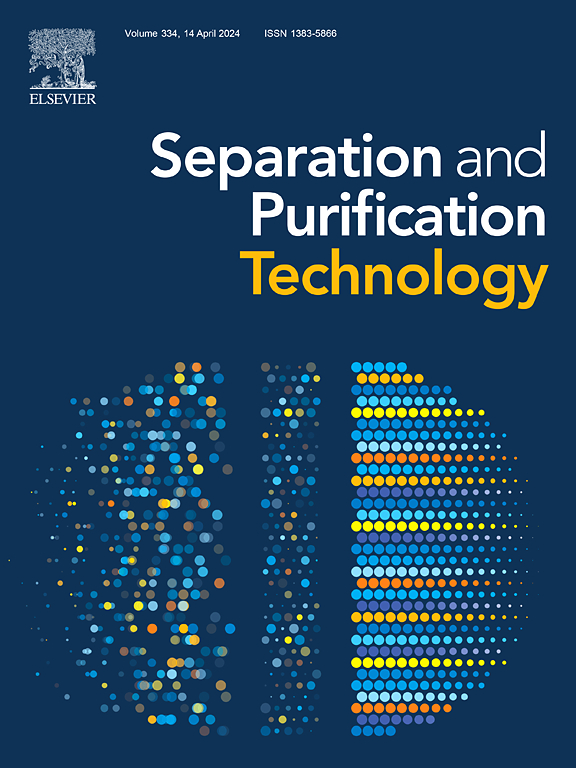Rapid multi-criteria screening of energy-integrated distillation processes for nonideal mixtures
IF 9
1区 工程技术
Q1 ENGINEERING, CHEMICAL
引用次数: 0
Abstract
Several thousand distillation columns are industrially employed for various separations, accounting for a substantial share of the industrial energy demand. In order to reduce their energy requirements various means for energy integration, such as direct heat integration, multi-effect distillation, thermal coupling, or vapor recompression can be applied. Considering these options and combinations of these, several hundred possible process configurations can be designed even for separations into three product streams, while the choice for a best option depends strongly on the specific separation task and system properties. In order to enable a reliable case-specific evaluation, which avoids simplified heuristics or simplified thermodynamics, this article presents a computationally efficient, algorithmic framework for a multi-criteria evaluation of more than 750 energy-integrated distillation sequences for multicomponent separations in three product streams. The framework employs thermodynamically sound pinch-based shortcut models that do not rely on constant relative volatility and constant molar overflow assumptions, making it applicable to nonideal and azeotropic mixtures. Based on the minimum energy duties and the respective flowsheet information, classical estimation methods for equipment sizes, operating costs, and capital investment, are employed. Several case studies demonstrate the framework’s applicability to azeotropic systems, its computational efficiency benefits that enable performing sensitivity analyses for varied process, thermodynamic, and economic scenarios.


非理想混合物能量集成蒸馏过程的快速多准则筛选
几千个精馏塔在工业上用于各种分离,占工业能源需求的很大一部分。为了减少它们的能量需求,可以采用各种能量整合手段,如直接热整合、多效蒸馏、热耦合或蒸汽再压缩。考虑到这些选项和它们的组合,数百种可能的工艺配置甚至可以设计成三个产品流的分离,而最佳选项的选择在很大程度上取决于特定的分离任务和系统属性。为了实现可靠的具体情况评估,避免简化启发式或简化热力学,本文提出了一个计算效率高的算法框架,用于对三个产品流中750多个多组分分离的能量集成蒸馏序列进行多标准评估。该框架采用了热力学合理的基于夹紧的快捷模型,不依赖于恒定的相对挥发性和恒定的摩尔溢出假设,使其适用于非理想和共沸混合物。基于最小能耗和各自的流程信息,采用了设备尺寸、运行成本和资本投资的经典估算方法。几个案例研究表明,该框架适用于共沸体系,其计算效率优势使其能够对不同的过程、热力学和经济情景进行灵敏度分析。
本文章由计算机程序翻译,如有差异,请以英文原文为准。
求助全文
约1分钟内获得全文
求助全文
来源期刊

Separation and Purification Technology
工程技术-工程:化工
CiteScore
14.00
自引率
12.80%
发文量
2347
审稿时长
43 days
期刊介绍:
Separation and Purification Technology is a premier journal committed to sharing innovative methods for separation and purification in chemical and environmental engineering, encompassing both homogeneous solutions and heterogeneous mixtures. Our scope includes the separation and/or purification of liquids, vapors, and gases, as well as carbon capture and separation techniques. However, it's important to note that methods solely intended for analytical purposes are not within the scope of the journal. Additionally, disciplines such as soil science, polymer science, and metallurgy fall outside the purview of Separation and Purification Technology. Join us in advancing the field of separation and purification methods for sustainable solutions in chemical and environmental engineering.
 求助内容:
求助内容: 应助结果提醒方式:
应助结果提醒方式:


